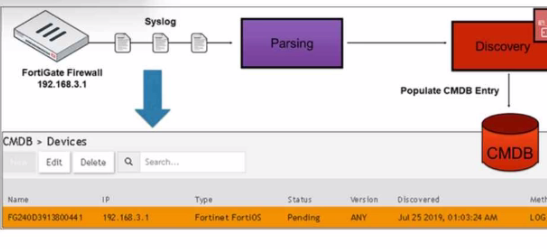At ValidExamDumps, we consistently monitor updates to the Fortinet NSE5_FSM-6.3 exam questions by Fortinet. Whenever our team identifies changes in the exam questions,exam objectives, exam focus areas or in exam requirements, We immediately update our exam questions for both PDF and online practice exams. This commitment ensures our customers always have access to the most current and accurate questions. By preparing with these actual questions, our customers can successfully pass the Fortinet NSE 5 - FortiSIEM 6.3 exam on their first attempt without needing additional materials or study guides.
Other certification materials providers often include outdated or removed questions by Fortinet in their Fortinet NSE5_FSM-6.3 exam. These outdated questions lead to customers failing their Fortinet NSE 5 - FortiSIEM 6.3 exam. In contrast, we ensure our questions bank includes only precise and up-to-date questions, guaranteeing their presence in your actual exam. Our main priority is your success in the Fortinet NSE5_FSM-6.3 exam, not profiting from selling obsolete exam questions in PDF or Online Practice Test.
Refer to the exhibit.

How was the FortiGate device discovered by FortiSIEM?
Discovery Methods in FortiSIEM: FortiSIEM can discover devices using various methods, including syslog, SNMP, and others.
Syslog Discovery: The exhibit shows that the FortiGate device is discovered by FortiSIEM using syslog.
Syslog Parsing: The syslog messages sent by the FortiGate device are parsed by FortiSIEM to extract relevant information.
CMDB Entry: Based on the parsed information, an entry is populated in the Configuration Management Database (CMDB) for the device.
Evidence in Exhibit: The exhibit shows the syslog flow from the FortiGate Firewall to the parsing and discovery process, resulting in the device being listed in the CMDB with the status 'Pending.'
Reference: FortiSIEM 6.3 User Guide, Device Discovery section, which explains how syslog discovery works and how devices are added to the CMDB based on syslog data.
FortiSIEM is deployed in disaster recovery mode.
When disaster strikes, which two tasks must you perform manually to achieve a successful disaster recovery operation? (Choose two.)
Disaster Recovery Mode: FortiSIEM's disaster recovery (DR) mode ensures that there is a backup system ready to take over in case the primary system fails.
Manual Tasks for DR Operation: In the event of a disaster, certain tasks must be performed manually to ensure a smooth transition to the secondary system.
Promoting the Secondary Supervisor:
Use the command phSecondary2primary to promote the secondary supervisor to the primary role. This command reconfigures the secondary supervisor to take over as the primary supervisor, ensuring continuity in management and coordination.
Changing DNS Configuration:
Update the DNS configuration to direct all users, devices, and collectors to the secondary FortiSIEM instance. This ensures that all components in the environment can communicate with the newly promoted primary supervisor without manual reconfiguration of individual devices.
Reference: FortiSIEM 6.3 Administration Guide, Disaster Recovery section, provides detailed steps on promoting the secondary supervisor and updating DNS configurations during a disaster recovery operation.
Which FortiSIEM feature must you use to produce a report on which FortiGate devices in your environment are running which firmware version?
Feature Overview: FortiSIEM provides several tools for querying and reporting on device information within an environment.
Inventory Tab: The Inventory tab is specifically designed to display detailed information about devices, including their firmware versions.
Query Functionality: Within the Inventory tab, you can run queries to filter and display devices based on specific attributes, such as the firmware version for FortiGate devices.
Report Generation: By running a query in the Inventory tab, you can produce a report that lists the FortiGate devices and their corresponding firmware versions.
Reference: FortiSIEM 6.3 User Guide, Inventory Management section, explains how to use the Inventory tab to query and report on device attributes.
Where must you configure rule notifications and automated remediation on FortiSIEM?
IF the reported packet loss is between 50% and 98%. which status is assigned to the device in the Availability column of summary dashboard?
Device Status in FortiSIEM: FortiSIEM assigns different statuses to devices based on their operational state and performance metrics.
Packet Loss Impact: The reported packet loss percentage directly influences the status assigned to a device. Packet loss between 50% and 98% indicates significant network issues that affect the device's performance.
Degraded Status: When packet loss is between 50% and 98%, FortiSIEM assigns a 'Degraded' status to the device. This status indicates that the device is experiencing substantial packet loss, which impairs its performance but does not render it completely non-functional.
Reasoning: The 'Degraded' status helps administrators identify devices with serious performance issues that need attention but are not entirely down.
Reference: FortiSIEM 6.3 User Guide, Device Availability and Status section, explains the criteria for assigning different statuses based on performance metrics such as packet loss.